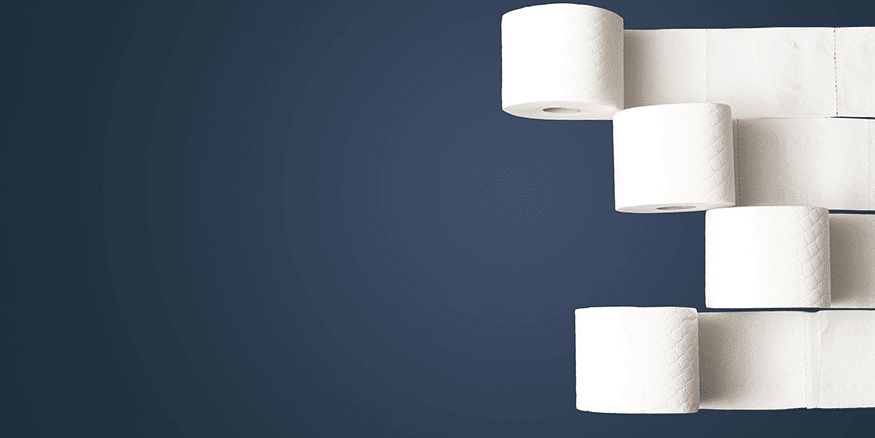
The History of Toilet Paper
While grocery stores with fully stocked rows of toilet paper have made most of us take the product for granted, the widespread shortages that occurred during the early days of the COVID-19 pandemic made the world realize how much we rely on this necessity. For people with digestive conditions, having consistent access to toilet paper is especially important. However, while we consider it vital today, the toilet roll has really not been around for long. Read on to learn about how we went from leaves and moss to dedicated, soft, white paper.
Before Toilet Paper
Throughout history, people wiped with whatever they had available. What an individual used would depend on their geographical location and social class. While things found in nature, such as moss, leaves, grass, hay, shells, and husks were most common, wealthier people might use wool or fabrics. In Ancient Rome, the custom was to use a sponge on a stick, usually shared between multiple people but soaked in saltwater or vinegar between uses.
The first recorded use of something resembling toilet paper was from China in the 6th century. Many people in China used paper products to wipe long before paper was available in the rest of the world, with evidence of mass production dating back to the 14th century.
In the 16th century, paper became widespread in Europe, so the population began to use old newspapers and pages from books to wipe. In the US, around the 19th century, catalogues became popular, especially Farmers’ Almanac (est. 1818) and Sears Roebuck (est. 1893) as they were printed on soft paper, delivered free, and even had a hole in the corner to help hang in the outhouse. People would tear off a sheet to use and then toss it into the outhouse hole.
Toilet Paper Enters the Market
The first product made specifically for bum-wiping originated in the US in 1857. Joseph Gayetty created a product made of “aloe-infused sheets of manila hemp” that came in boxes. They were meant to treat hemorrhoids. In 1890, two American brothers introduced the very useful toilet paper roll.
The rise of indoor plumbing helped the popularity of toilet paper soar. Since leaves, moss, and catalogue paper could clog the pipes, everyone turned to flushable toilet paper.
In the 1950s, boutique toilet paper appeared in concentrated colours, such as navy blue and hot pink, and the upper-class enjoyed these costlier products for a while. They soon disappeared from most retailers when users developed uncomfortable rashes from the intense chemicals. By the 1970s, many users were concerned more about the environment than the pretty products, further reducing the popularity of colourful toilet paper.
Toilet Paper Today
Today we have access to a wide variety of products, from the scratchy, single-ply common in public washrooms to soft and sturdy rolls. You can buy toilet paper in different plies and textures, some with indented patterns. You can even find toilet paper with printed images or added scent (not recommended!) for a price. Whatever your preferences, there is a roll for you.
Toilet Paper is Not Ubiquitous
While it is common and expected in any bathroom throughout many parts of the world, there are some places where people don’t often use toilet paper. Those who live without indoor plumbing often use older wiping tools, and in many places, including Canada, using a bidet to wash instead of wiping with toilet paper is common.

